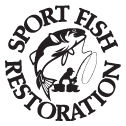CONTACT US:
Florida Fish and Wildlife
Conservation Commission
Fish and Wildlife
Research Institute
100 Eighth Avenue SE
St. Petersburg, Florida 33701
727-896-8626
|
|

|
|
Partial funding for this project was obtained through the Federal Aid in Sport Fish Restoration Fund.
|
|
|
 |

|
Biscayne Bay is a subtropical estuary that extends the entire length of Miami-Dade County from Aventura in the north to the northern edge of Key Largo. Protected from the ocean to the east by a chain of islands or keys and by the mainland to the west, it encompasses a marine ecosystem that totals approximately 428 square miles.
Biscayne Bay is an important estuarine and marine habitat for fish and wildlife including numerous endangered, threatened and protected species. Mangroves fringe the shorelines of central and southern Biscayne Bay, and seagrass and hardbottom communities support a vast array of life. In fact, approximately 70 percent of the area's recreationally and commercially important fishes, crustaceans and shellfish spend a portion of their young lives in the bay's protective environment.
Home to Biscayne National Park, the largest marine park in the national park system, as well as the Biscayne Bay Aquatic Preserves, Biscayne Bay has been recognized as an Outstanding Florida Water for its ecological values. The bay's crystal blue waters also support vital economic activity for the region and are a defining feature of life in Miami-Dade County. Recreational activities are available year-round, and boaters and anglers are among the most frequent users of Biscayne Bay.
|
|
Biscayne Bay es un estuario subtropical que se extiende a todo lo largo de Miami-Dade desde Aventura en el norte hasta el extremo norte de Key Largo (Cayo Largo). Protegida por el ocñano en el este por una cadena de islas o cayos y al oeste por la parte continental, que abarca un ecosistema marino que asciende a aproximadamente 428 millas cuadradas.
Biscayne Bay es un estuario importante y un hábitat marino para peces y vida silvestre, incluyendo numerosas especies en peligro de extinción, amenazadas y protegidas. Los manglares bordean las costas del centro y sur de Biscayne Bay, y las algas marinas con las comunidades hardbottom sostienen una gran variedad de vida. De hecho, aproximadamente el 70 por ciento de los peces, crustáceos y moluscos de importancia recreacional y comercial, pasan parte de su juventud en este ambiente protegido de la bahía.
Biscayne National Park, es el parque marino más grande del sistema de parques nacionales, así como Biscayne Bay Aquatic Preserve, Biscayne Bay ha sido reconocido como Outstanding Florida Water por sus valores ecológicos. Las aguas cristalinas de la bahía también apoyan la actividad económica vital para la región y son una característica definitoria de la vida en Miami-Dade. Las actividades recreativas están disponibles durante todo el año, y los navegantes y pescadores se encuentran entre los usuarios más frecuentes de la Bahía de Biscayne.
|

|
This Web site was last updated on January, 2022.
Este sitio web ha sido actualizado en Enero, 2022
|
Photo credits: Elkhorn coral, Biscayne National Park; Sunset over Biscayne Bay, Biscayne National Park; Sailboats at Dinner Key, Michael Wray; Family kayaking, Michael Wray; Exploring Biscayne Bay, Biscayne National Park
|













